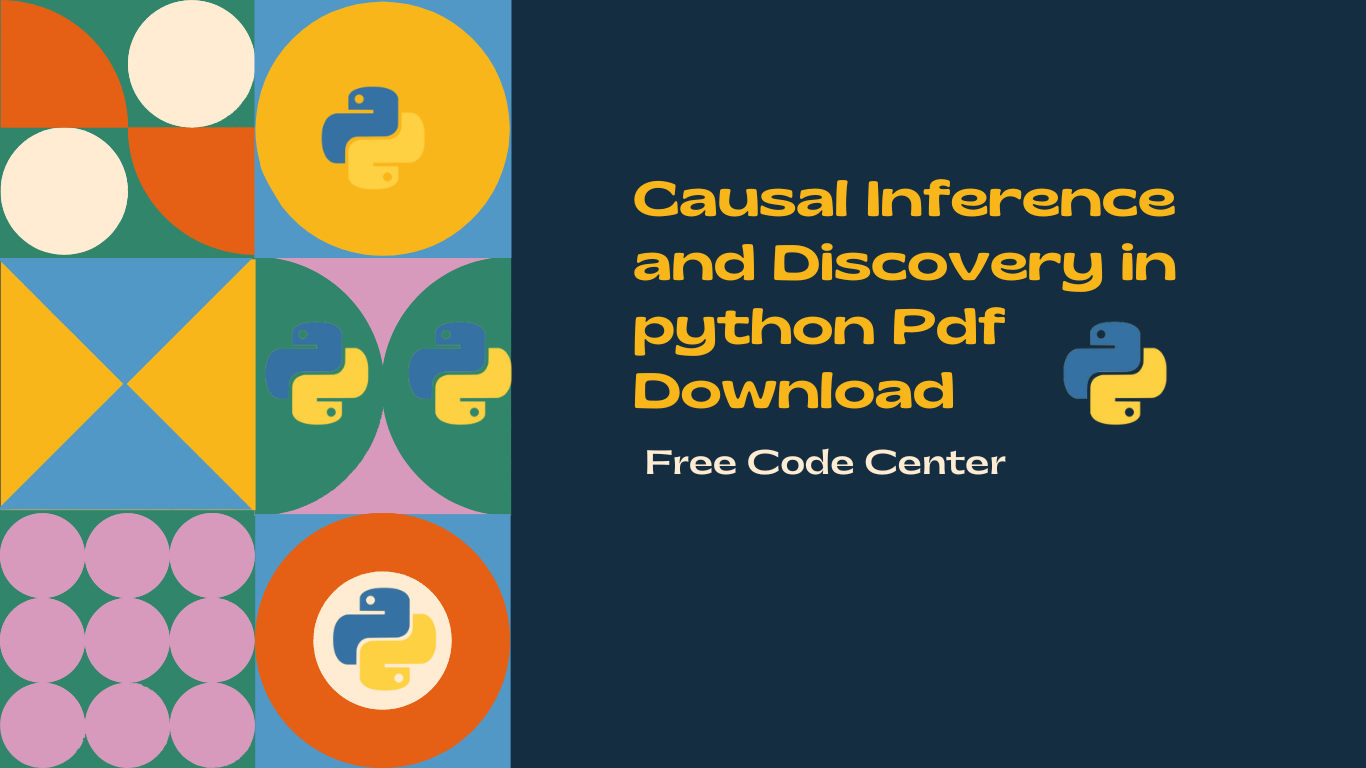Master Causal Inference and Discovery in Python: Download Your Free PDF Guide Today!
Introduction
To enhance the character of the analysis and get some solid results from large amounts of data, it is very important to analyze the causality of characters in data science. Python occupies an important place among other programming languages and for this purpose it has an arsenal of tools. For those who wants to put their knowledge into practice and invoke the potential of causal inference via the Python programming language – it is a right time. Download the great PDF file available and learn how to conduct causal inference and causal discovery in the Python environment!
What is Causal Inference?
Causal inference is a term that refers to a statistical process that is used to establish whether a causal relationship exists between two events or variables. In contrast, correlation indicates which two variables vary at the same level rather than causation. Causality inference takes it up a notch by trying to explain if you change or manipulate one variable, the other will change or be affected in some way. This technique is very effective in various fields including but not limited to epidemiology, economics, and social sciences, where the need for action powered by predictive analytics is of utmost importance.
The Role of Python in Causal Inference
Python’s well-established ecosystem of libraries and frameworks proves beneficial for the practical implementation of causal inference techniques. CausalNex, DoWhy, Pyro, and others are designed to encapsulate specific tasks and possess easier-to-use functions for causality inferences. Such tools not only provide founders with ergonomic approaches to approach coherence but also fit well in the lap of data science along with their own capabilities of data handling and visualization.
Key Python Libraries for Causal Discovery
Before going further into the analysis of the causality in a typical Python environment, take a look at the following useful tools in your causal analysis endeavors:
- DoWhy: A product of Microsoft, DoWhy is an open-source Python library designed to ease the challenge in causal inference. It enables users to arrange their data in the form of a causal graph which is subsequently used to determine the extent of the causal inference.
- CausalNex: CausalNex is a product of QuantumBlack, which develops Bayesian Networks for supporting structure learning which can incorporate uncertainty in the data. It is used to both infer the causal relations and also perform predictions based on those causal relations.
- Pyro: Pyro is a python-based probabilistic programming language which is used for performing complex models due to the high level of probability techniques it possesses.
Tutorial: Implementing Causal Inference with DoWhy
Here’s a basic tutorial to get you started with causal inference using the DoWhy library:
import dowhy
from dowhy import CausalModel
import pandas as pd
# Load dataset
data = pd.read_csv('path_to_your_data.csv')
# Define the causal model
model = CausalModel(
data=data,
treatment='Treatment_Variable',
outcome='Outcome_Variable',
common_causes='Confounders_Variables'
)
# Identify the causal effect
identified_estimand = model.identify_effect()
# Estimate the causal effect using linear regression
causal_estimate = model.estimate_effect(identified_estimand,
method_name="backdoor.linear_regression")
# Output the estimated causal effect
print(f"Causal Estimate is: {causal_estimate.value}")This tutorial provides a glimpse into the power of Python for conducting robust causal analysis, enabling you to make predictions and decisions with greater accuracy.
Dcausal inference and discovery in python pdf free download
Dive deeper into causal inference with our exclusive, free PDF download:
The goal of these guidelines is that the readers should be able to make causal inferences using Python as easily as possible, by providing them with all of the necessary step-by-step processes, examples, and recommendations.
FAQs on Causal Inference in Python
Basic statistical knowledge is indeed an asset, however, most of the complex stuff is simplified through Python’s libraries, making it easy for even a novice.
Yes, using Python it is indeed possible to do some data analysis in real time, thereby providing real-time information that can be acted upon immediately.
Conclusion
To kill and torture causal relationships among the data is one skill that makes you stay in the competition – data analyst. Thanks to Python and our step-by-step PDF guide, you’re ready to perform causal inference and gain additional information from the data. Get the guide now and enhance your data science competence!

